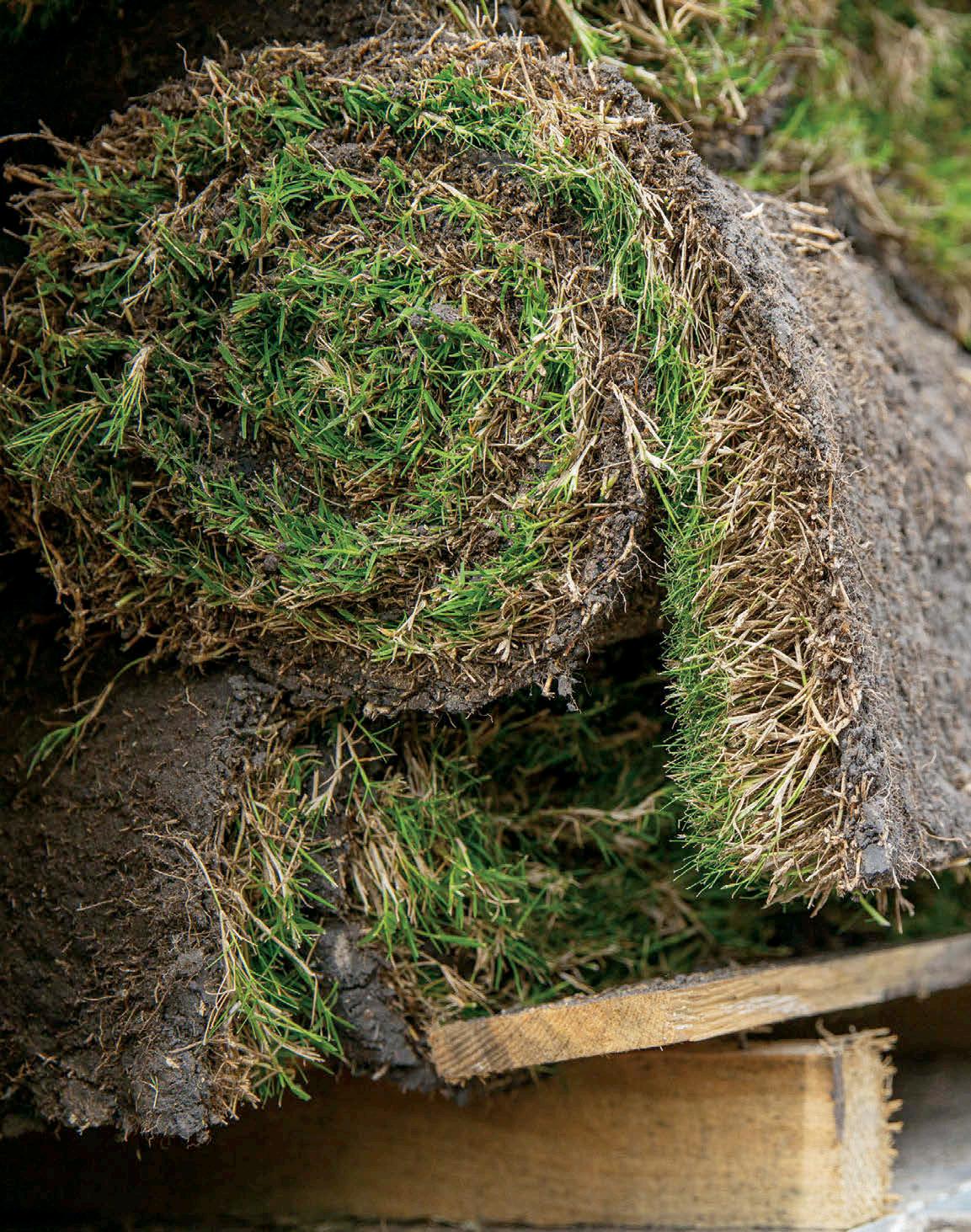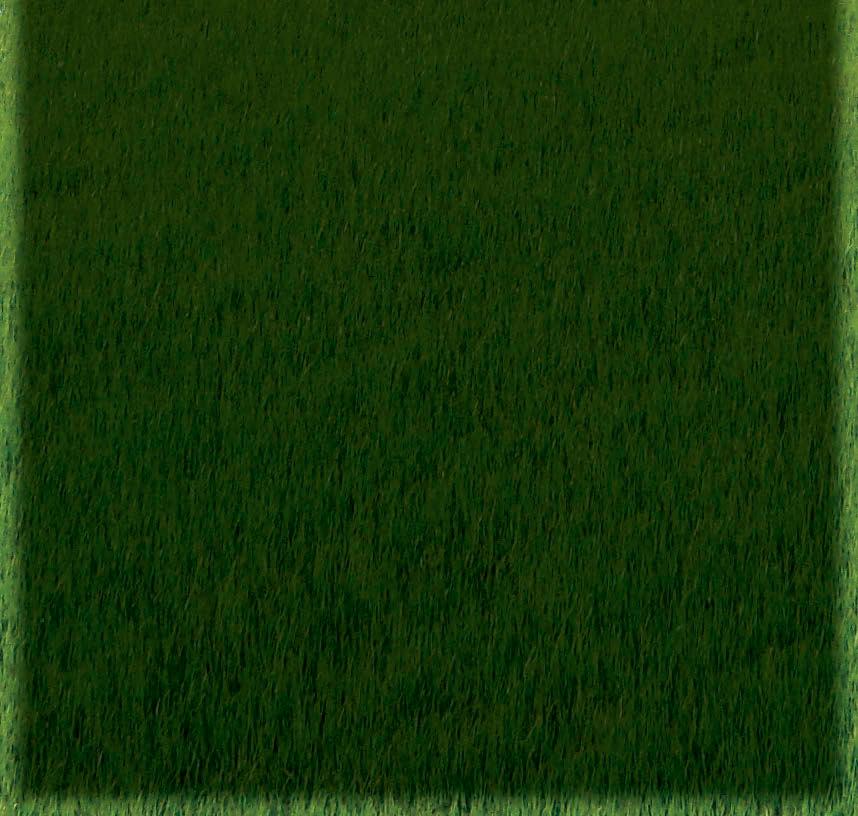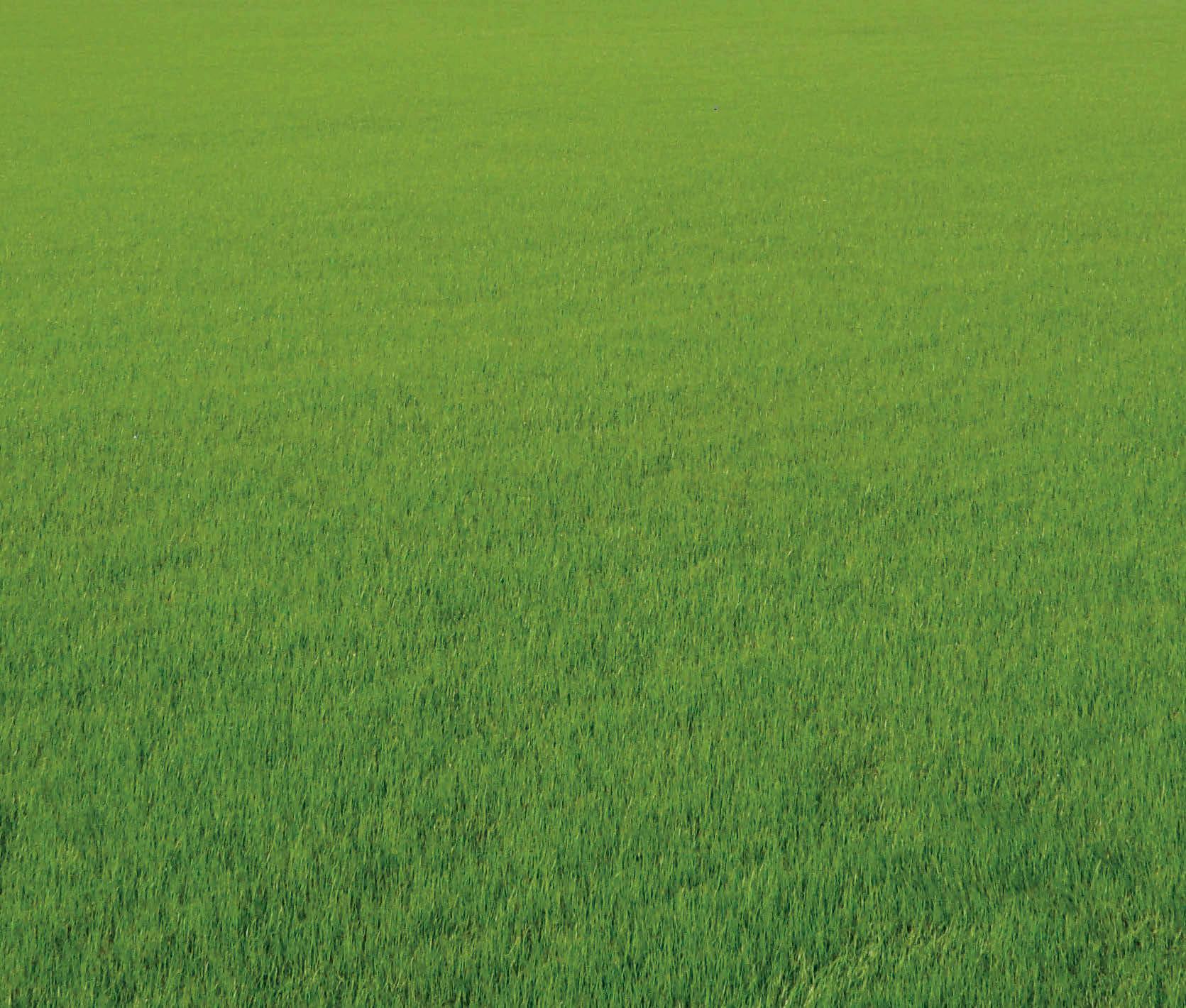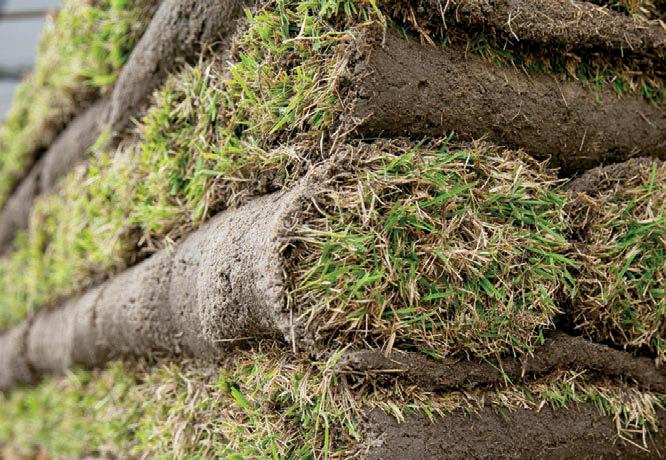
10 minute read
Introducing TPI’s New Publication—Turfgrass Sod as Agriculture
by TPIturfnews
INTRODUCING TPI’S NEW PUBLICATION—
TURFGRASS SOD AS AGRICULTURE
TPI’s new publication Turfgrass Sod as Agriculture will soon arrive in your mailbox! This publication builds on a 30-yearold report that explored and listed the instances where turfgrass sod production fit the policy definition of agriculture, thus qualifying for regulatory exceptions and exemptions enjoyed by producers of other agricultural products and commodities. This document updates and expands on that idea and demonstrates the progress turfgrass sod production has made in reserving its place as an agricultural product in the broad definitions of “agriculture” and “farming,” with its production and marketing risk sharing the same policy treatment as those “traditional” farming products of crops, livestock, and dairy. The terms farming, agriculture, and horticulture can be found dispersed throughout legal codes in a wide variety of applications such as labor, transportation, insurance, tax preparation, and more. This new TPI member benefit details the many instances where courts and legislative bodies have ruled on turfgrass sod’s status as an agricultural product.






Federal Recognition 2022
Introduction
1 The 2020 TPI Pest Control Guide for Sod Production has beendeveloped as a resource to assist in controlling turfgrassweeds, insects, and diseases on sod farms worldwide. It is intended be used as a guide when making decisions on applying herbicides, plant growth regulators, insecticides,and fungicides in commercial turfgrass production and shouldalways be used as a component of best management practices(BMPs). Given the international scope of this guide, please referto local and national laws for a product’s current registrationstatus in sod production as well as specific applicationinformation. This guide was created using general knowledgeof turfgrass production and pest control practices along with United States and international labeling information from the resources below. Crop Data Management Systems (U.S Labels)http://www.cdms.net/Label-Database
Australian Pesticides and Veterinary Medicines AuthorityPubcris Database https://portal.apvma.gov.au/pubcris European Commission Pesticides Database https://ec.europa.eu/food/plant/pesticides/ eu-pesticides-database/public/?event= activesubstance.selection&language=EN Some of the information about products listed in this guideincludes, but is not limited to the following:
Common name: Products are listed alphabetically bythe common name of the primary active ingredients. 1Trade name: Products with the same primary activeingredients are often sold under different trade names, particularly in different countries. There may be trade names and product formulations beyond the ones listed.
Application rate: Application rates are provided in variousunits based on product labels. Examples include pounds per acre (lb/acre), ounces per acre (oz/acre), fluid ounces per 1,000 square feet (fl oz/1,000 ft2), etc. Application interval: Recommended intervals betweenapplications are based on the product label but varydepending on such factors as pest pressure/severityand acceptable damage thresholds. Mode of action: Information on a product’s mode of action(MOA) is listed to help applicators rotate MOAs to preventresistance from developing or to manage populations ofweeds, insects, or diseases that are already resistant:– HRAC, WSSA Code: The herbicidal MOA as defined bythe Herbicide Resistance Action Committee (HRAC)and the Weed Science Society of America (WSSA)
––IRAC Code: The insecticidal mode of action as defined by the Insecticide Resistance Action Committee (IRAC) FRAC Code: The fungicidal mode of action as defined by the Fungicide Resistance Action Committee (FRAC) Comments: Notes and cautions can help you improvecontrol and learn about restricted-use pesticides, usesites, turfgrass tolerance, etc. Turfgrass labeled for application: Turfgrass tolerance toherbicides varies by turfgrass species and is listed on theproduct label. Table 1 lists turfgrass species that herbicidesin this guide can be safely applied to according to theirlabel. For more information on turfgrass tolerance, see the“Turfgrass tolerance to postemergence herbicides” section.
Table 1. Turfgrass application codes for labeledherbicide tolerance of various turfgrass species,U.S. Nomenclature. Warm-season Cool-season
BA: Bahiagrass B: Bluegrass (species not specified)BE: Bermudagrass CBG: Creeping bentgrassBU: Buffalograss F: Fescue (species not specified)CA: Carpetgrass FF: Fine fescue CE: Centipedegrass KB: Kentucky bluegrass SA: St . Augustinegrass PR: Perennial ryegrassSS: Seashore paspalum R: Ryegrass (species not specified)Z: Zoysiagrass TF: Tall fescue Group 12 Fungicide: Mode of action (MOA)classification based on theHerbicide, Insecticide, orFungicide Resistance ActionCommittee (HRAC, IRAC, FRAC)
Lone Star WSP:
Trade name WSP: Formulation (water soluble packet).
GROUP 12 FUNGICIDE
Lone Star Fungicide WSP
(continued from booklet attached to front of container)
Active Ingredient: Fludioxonil* ......................................................... 50 .0%Other Ingredients ............................................... 50 .0%Total: .................................................................... 100 .0% *CAS No . 131341-86-1 Lone Star WSP is a 50% water dispersable granule. EPA Reg. No. 100-1434 Product of United States ............................................SCP 1434A-L2A 0912 4017353 8 ounces Figure 1. Information on product labels
NET WEIGHT
TURFGRASS SOD Introduction .............................................. 2Advocacy Considerations ......................... 4Judicial Interpretation .............................. 6Turfgrass Sod as a Crop ....................................... 7Federal Recognition. . . . . . . . . . . . . . . . . . . . . . . . . . . . . . . . . 10Federal Farm Support Policy. . . . . . . . . . . . . . . . . . . . . . . . . . . . . . . . . 11Federal Transportation Regulation .......................... 16Federal Tax Law ............................................. 18Federal Labor Law. . . . . . . . . . . . . . . . . . . . . . . . . . . . . . . . . . . . . . . . . . . 27Chapter 12 (Farm) Bankruptcy . . . . . . . . . . . . . . . . . . . . . . . . . . . . . . . 30State Statutory Definitions ...................... 32References. . . . . . . . . . . . . . . . . . . . . . . . . . . . . . . . . . . . .. . . . . . . . . . . 52
AS AGRICULTURE
HOW (AND WHY) FEDERAL AND STATE POLICY APPLIES FARM PROTECTIONS TO SOD PRODUCTION Fludioxonil: Common name Information presented in this guide with regard to legal rulings on turfgrass sod’s status as agriculture were gathered through a search of various federal, state, and local guidelines.It is not intended to be presented as an exhaustive list and there may be additional instancesin various legal rulings not presented in this text. If you have additional instances of legalrulings on turfgrass sod and would like them included in future revisions of this guide,please contact Dr. Casey Reynolds atcreynolds@TurfgrassSod.org. In nf f fo o a ag g gr ric I It ti is s n in v va a r ru ul li in ng
Turfgrass Sod as a Crop From time to time, courts must apply basic logic to the question of whether a farm element is personal property or real property. This question arises in various farm contexts – for example, for tax purposes classification of a greenhouse as a fixture to real property rather than a moveable item of personal property. Another example is when land is sold with growing (cultivated) sod, a court must determine whether the sod is normal growing grass (“fructus naturales”) and part of the realty, or whether a commercial product that may be severed and retained by the seller (“fructus industriales”). One court case provides illumination of the logic applied to the argument that sod is a crop and not a natural part of real estate. In the Michigan case ofBarron v. Edwards (45 Mich.App.210, 1973), a court of appeals noted the distinction between fructus naturales and fructus industrials: es d er e es 73), and Judicial Interpretation





Federal Farm Support Policy Federal farm-support policy supports and often specifically includes turfgrass sod production as an agriculture and/or horticulture commodity. The federal Farm Bill –considered and passed by Congress generally every five years –has historically treated sod/turfgrass as an agricultural product under various programs. Below are some historical and recent examples.
s Apart from statutes or peculiar circumstances requiring a contrary conclusion, it is stated in many cases that those products of the earthwhich are annual, raised by yearly manurance and labor, and which owe their annual existence to cultivation by man, may be treated as personal chattels, for some purposes at least, even while still annexed to the soil and irrespective of their maturity. Conversely, and also in the absenceof statutory provisions or peculiar circumstances requiring a contrary conclusion, fructus naturales — grasses growing from perennial roots and, according to some courts, the fruit or other products of trees, bushes, and plants growing from perennial roots — are regarded as realty while they are unsevered from the soil.” (Barronat 214)
owe onal oil e ry ots
The court concluded that, on the facts of the case (but consistent with all sod production):
ent
. Here the sod owed its existence to yearly fertilizing and cultivation byman. It is also significant that plaintiff raised thissod on several prior occasions and apparently treated it as a commercial product. Thus, this sod cannot be considered “growing grass” as the plaintiff contends. We therefore hold that the sod in the instant case was personalty. n b rio us, nt
7
Agricultural Research Most recently, the 2018 Farm Bill (Agricultural Improvement Act of2018)7 included turfgrass and sod in its National Research Initiative funding authorization. The 2018 Farm Bill –again the federal law that authorizes funding for programs in support of agricultural production –recently included turfgrass as a target commodity for research and extension grant funding. Such research funding is routinely allocated for research on various agricultural commodities, and turfgrass has been added to that list. Specifically, this program authorizes funding for the following:
• carrying out or enhancing research related toturfgrass and sod issues;• enhancing production and uses ofturfgrass for the general public;• identifying newturfgrass varieties with superior drought, heat, cold,and pest tolerance to reduce water, fertilizer, and pesticide use; • selecting genetically superiorturfgrasses and development of improved technologies for managing commercial, residential, and recreational turf areas; • producing grasses that aid in mitigating soil erosion, protect againstpollutant runoff into waterways, and provide other environmental benefits; • investigating, preserving, and protecting native plant species, including grasses not currently used in turf systems;• creating systems for more economical and viableturfgrass seedandsod production throughout the United States; and• investigating theturfgrass phytobiome and developing biologicproducts to enhance soil, enrich plants, and mitigate pests.nhanc
11
32
SNote the terminology used in the legislative language, and its similarity to the critical attributes of all forms of crop production, with references to water, pesticides, fertilizers, genetics and seed. ology tical water, State Statutory Definitions tate statutory law –the public policy expressed by elected state legislatures –is filled with various definitions of terms recognizable to the application of the particular policy. The terms “farming’ and “agriculture” are defined in several types of laws, ranging from sales tax exemptions, reduced property taxes, authorization for farmland preservation programs, and right-to-farm laws meant to defend against nuisance lawsuits. Invariably, one or more of these definitions of agriculture will include “sod” or “turf” production. Often, state codes contain a title devoted to agricultural policy and regulations, to which a generic definition of agriculture is applicable throughout NOT A TPI MEMBER? the statutory title. Such definitions expressed by these laws focus on production in farming, and sod –raised and harvested from land with the accoutrements of farm production –agricultural land, water use exemptions, farm equipment purchased through agricultural finance JOIN TODAY! systems, and labor provided through agricultural exemptions and programs –fits alongside vegetable, grain and other crops traditionally seen as “farming.” Below is a survey of generic state definitions – Receive your FREE copy of this organized by topic –and how they include turfgrass sod production in the definition of farming and agriculture. new publication and much more! See the following two pages for another FREE TPI publication—
and visit www.TurfGrassSod.org to find great additional resources exclusively for TPI members.











